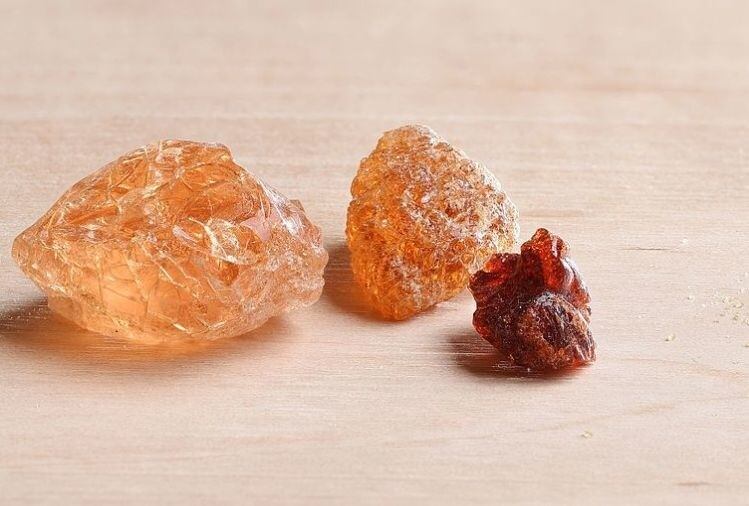Under new FDA rules, isolated or synthetic non-digestible carbs must be determined to have physiological effects beneficial to human health before they can be counted as dietary fiber for nutrition labeling purposes on the new Nutrition Facts labels (which came into effect on January 1 for firms generating $10m+ in food sales, although the FDA has allowed a six-month period before it will enforce them).
In a letter dated January 31 to law firm Keller and Heckman (which submitted a citizen petition last year on behalf of multiple acacia gum suppliers), the FDA wrote: "Based on our consideration of the scientific evidence and other information submitted with the petition, and other pertinent scientific evidence and information, we conclude that the strength of the evidence is insufficient to demonstrate that gum acacia has a physiological effect that is beneficial to human health...
"Therefore, we are denying your petition."
But it added: "We would consider a new petition from you concerning the consumption of gum acacia that is based on new scientific information."
Alland & Robert: 'We strongly disagree with FDA's decision'
Suppliers of acacia gum contacted by FoodNavigator-USA said they were very disappointed by the letter and were reviewing their options.
Dr. Isabelle Jaouen, R&D director at Alland & Robert, told us: "There is a lot of scientific literature supporting the fact that Acacia gum is a dietary fiber. It has been extensively researched and demonstrated. Acacia gum being genuinely and obviously a non-digestible carbohydrate intrinsic and intact in nature, we strongly disagree with FDA's decision, especially since we submitted a citizen petition earlier in 2019 that included scientific research showing the benefits of acacia gum on energy intake, blood glucose levels and bowel functions."
She said: "We have a lot of data coming from several clinical trials to support our request that acacia gum be labelled as a dietary fiber. Two laboratories that specialize in clinical nutrition, including one university, have even been mandated for the design and realization of additional clinical tests performed these last two years. Unfortunately, results have been considered as not sufficient for the FDA: we will take position about further actions in the coming days”.
CEO Frédéric Alland added: “We will examine our possibilities to appeal this decision."
TIC Gums: 'We felt the evidence was sufficient to demonstrate physiological benefit'
Lorien Reynolds, regulatory affairs manager at acacia gum supplier TIC Gums (part of Ingredion) said: “TIC Gums and Ingredion are disappointed in the FDA conclusion that acacia cannot be considered dietary fiber and will continue efforts to collaborate with industry and FDA regarding acacia gum. We felt the evidence was sufficient to demonstrate physiological benefit on the citizens petition, but, per FDA response, will continue to review new studies that may strengthen the overall body of evidence.
"Although acacia may not be counted toward dietary fiber, TIC Gums and Ingredion do have many products that meet the definition of dietary fiber including the newly approved glucomannan (TICorganic Konjac HV, Ticagel Konjac High Viscosity) and cross-linked phosphorylated resistant starch 4 (VERSAFIBE 1490, NOVELOSE 3490.)."
Nexira: We'll continue to collaborate with the FDA
Fellow supplier Nexira said it was confident that a new clinical study initiated last year would “strengthen the body of evidence supporting the beneficial physiological effects of acacia fiber,” and said that it would “continue to collaborate with the FDA and with the acacia gum industry, in order to bring new data in 2020.”
The company added: “We are confident in the future of our branded acacia fiber Fibregum and hope that the new results will help the FDA to add acacia gum in the positive list of approved dietary fibers.”
In the meantime, acacia can continue to be used as an approved GRAS food additive, and should be included in the declaration of total carbohydrate with a caloric value of 1.7 kcal/g2, but cannot count towards grams of dietary fiber.
Dietary fiber that can be declared on the Nutrition and Supplement Facts labels includes certain naturally occurring fibers that are ‘intrinsic and intact’ in plants, and added isolated or synthetic non-digestible soluble and insoluble carbohydrates that the FDA has determined have physiological effects that benefit human health.
Naturally occurring or ‘intrinsic’ fiber is found in foods such as vegetables, whole grains, fruits, cereal bran, flaked cereal and flours (the fibers are considered ‘intact’ because they have not been removed from the food). Foods containing these fibers have been shown to be beneficial, and manufacturers do not need to demonstrate that they provide beneficial physiological effects to human health in order for them to be classified as ‘dietary fibers’ on the Nutrition Facts or Supplement Facts panel, says the FDA.
The FDA has also identified the following isolated or synthetic non-digestible carbs, which are added to food, as meeting the dietary fiber definition:
- Beta-glucan soluble fiber
- Psyllium husk
- Cellulose
- Guar gum
- Pectin
- Locust bean gum
- Hydroxypropylmethylcellulose
It also proposes that the following non-digestible carbs be added to the definition of dietary fiber:
- Mixed plant cell wall fibers (a broad category that includes fibers like sugar cane fiber and apple fiber, among many others)
- Arabinoxylan
- Alginate
- Inulin and inulin-type fructans
- High amylose starch (resistant starch 2)
- Galactooligosaccharide
- Polydextrose
- Resistant maltodextrin/dextrin
- Cross linked phosphorylated RS4
- Glucomannan
Get the latest information on the FDA's classification of dietary fibers HERE.


